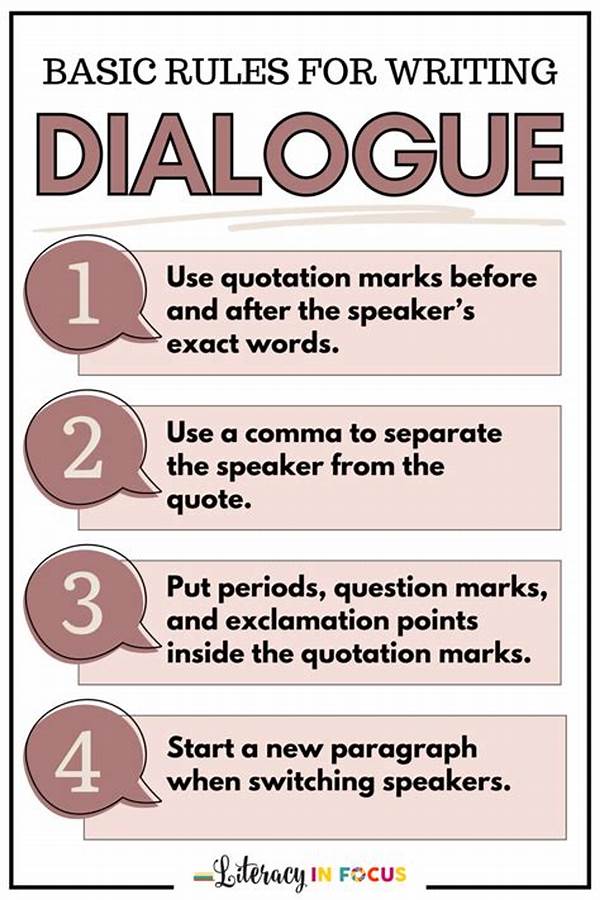Natural-sounding language is the heart of any engaging story. It draws readers in, allowing them to fully immerse themselves within the narrative. When characters speak in a way that feels genuine, it enhances the believability of the plot and the emotional connection with the audience. Let’s explore the techniques for natural dialogue writing that can transform flat conversations into dynamic exchanges.
Understanding the Basics of Natural Dialogue
Creating conversations that flow effortlessly between characters requires an understanding of how real people talk. People often speak in a combination of direct statements, questions, interruptions, and slang, depending on their relationship with one another. To effectively use techniques for natural dialogue writing, a writer must pay attention to the nuances of spoken language.
In implementing these techniques, the first step is to develop ear-pleasing exchanges. These exchanges should reflect the diversity of how personalities come across in speech, from varying tones to the natural rhythm of conversation. Practicing this skill means occasionally stepping away from formal writing conventions to embrace a casual rhythm that feels authentic to each character. Additionally, it’s important to introduce an element of unpredictability to keep dialogues lively and reflective of real interactions.
Utilizing Dialogue Tags Effectively
Dialogue tags such as “said,” “replied,” or “asked” help the reader follow who is speaking without breaking immersion. One of the key techniques for natural dialogue writing involves the strategic use of tags to enhance rather than detract from a conversation. Overusing complex verbs can distract readers, whereas simple tags allow the dialogue itself to shine.
1. Stick to basic tags like “said” for clarity and flow.
2. Use actions instead of tags to show emotion or movement.
3. Vary tag placement to maintain a conversational rhythm.
4. Eliminate tags when context makes it clear who is speaking.
5. Consider the pacing—quick exchanges might skip tags entirely.
Crafting Character-Specific Voices
To make dialogue sound authentic, each character must have a unique voice. This means considering their background, education, region, and personal quirks when they speak. Techniques for natural dialogue writing involve listening to how different people express themselves, then applying those observations to create distinct voices.
Developing individual voices makes conversations more interesting and true to character dynamics. For example, a well-educated professor, an energetic teenager, and a seasoned traveler will all speak differently. Recognizing these differences not only distinguishes characters from one another but also helps in portraying their personalities and emotions more vividly.
Balancing Dialogue and Description
Natural dialogue not only communicates words but also carries emotion and context. Techniques for natural dialogue writing often require the integration of description and dialogue to balance the narrative. Dialogue should advance the plot or develop characters, while description helps set the scene or highlight emotional subtext.
Descriptions provide insight into a character’s internal state or the atmosphere of the scene. This means the writer must proficiently blend dialogue with sensory details or character reactions, ensuring the conversation serves the story while adding depth to the narrative landscape.
Avoiding Exposition Overload
One challenge in dialogue writing is avoiding excessive exposition, which can feel forced and unnatural. Techniques for natural dialogue writing encourage writers to subtly weave necessary information into conversations without overwhelming readers. This can be achieved by incorporating small, relevant details into dialogue exchanges rather than large info dumps.
When characters reveal information, it should align with their motives and current situations. This approach maintains authenticity, allowing the narrative to unfold naturally and keeping the audience engaged without feeling bogged down by explanations.
Honing Natural Sounding Language
Natural dialogue is a result of careful listening and observing real-life conversations. Writers are encouraged to pay attention to how people interact naturally. Techniques for natural dialogue writing can draw from these observations, creating dialogues that feel intuitive and layered with meaning.
Examining real conversations can reveal patterns and dynamics that often go unnoticed. For instance, how people pause, interrupt, or even their choice of words can vary greatly depending on the situation. Developing this keen ear for authentic speech patterns will inherently reflect those nuances in writing, contributing to dialogues that resonate with readers.
Summary of Techniques for Natural Dialogue Writing
Effortless dialogue is crafted not only by what is said but also by what is left unsaid. Techniques for natural dialogue writing highlight the importance of subtext and implication, allowing conversations to carry more meaning. In this sense, what lies beneath the words is as powerful as the dialogue itself.
Concluding that natural dialogue adds authenticity and depth to storytelling can help guide writers in refining their approach to dialogue writing. By paying attention to the subtleties of conversation dynamics and continually practicing these techniques, any writer can master the art of creating genuine and impactful dialogue.
